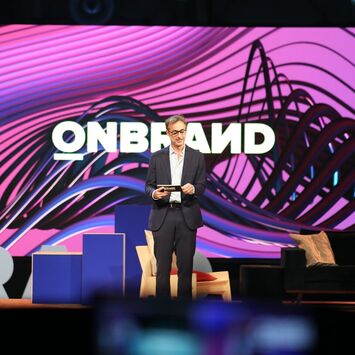I. #SocialMedia
It’s June 2008: You just finished updating your Myspace profile with the latest and greatest Coldplay track. You head over to this new site called Twitter.com to create an account because apparently Senator Obama has been tweeting up a storm. Meanwhile, in a business park somewhere in Texas a group of business executives is debating whether their company should take this “social media” stuff seriously. I can imagine being there. The CEO of Dell is debating with the CMO whether the intern on their marketing team can just “twitter” for them or whether Jerry from IT can handle it because he knows a lot about computers.
In 2016, we know how this story plays out: Most successful companies are more-or-less on the road to figuring social media out. They’ve hired senior teams that are dedicated to developing a strategy and executing on it. More and more CEOs are creating social accounts for themselves, many companies are developing dedicated channels for customer service, and it’s frankly hard to find a successful marketing campaign that doesn't have a clever hashtag (#MyCalvins).
Now, you’re asking: What does any of this have to do with social impact? I argue that how organizations were asking questions about social media in 2008 is looking very similar to how organizations are asking questions about social impact in 2016. Today, many companies are feeling increasing pressure from consumers to develop meaningful initiatives that create real social value, but they have very similar confusion around who owns these social impact projects and communications. Is it marketing? Communications or PR? Brand strategy? Sustainability?
Over time, brands stopped thinking about social media as a fad and began to see how it integrated across departments and tied directly to their long-term business goals. My hypothesis is that we’re going to see a similar transition for social impact in the coming years.
II. “Social impact” is born
Why are we hearing the term “social impact” so much anyway? Because traditional cause marketing as we know it is dead. In the business-sense, social impact is a relatively new term that is providing verbiage to the cutting-edge way some companies are “doing good” in the world. Doing good by integrating purpose into their core business model – not just creating side projects that compensate for the harm done by their profits. Cause marketing is when BP “donates $1 million to Catholic Charities in the Gulf to help offset oil spill hardships.” Social impact is when Patagonia engages with its customers around a program called “don’t buy this jacket.”
We’re headed in this direction because businesses’ two biggest stakeholders – consumers and employees – are seeking impactful companies. A 2015 Cone Communications study shows that 90% of consumers “expect companies to do more than make a profit” and they also illustrate that consumers take notice when companies set bold goals. Companies take note: Millennials and Gen Zers – soon to be the largest consumer classes – have the highest expectations for impact.
As a result of these trends, executives have convened back in the boardroom to ask questions about how their organizations account for social impact. Perhaps the most poignant indicator is that companies are starting to allocate real resources behind social impact as evidenced by the wealth of agencies and even media companies that are birthing “social impact” arms.
I work on the social impact team at General Assembly, a global education company specializing in today’s most in-demand skills, such as web development and user experience design. Prior to General Assembly, I worked for three years at an agency that helps nonprofits and companies put purpose and participation at the heart of what they do, so I saw many of these changes happening firsthand. Based on my experience, I have some hypotheses for how businesses can get ahead of the curve.
III. Setting social impact up for success in your organization
1. Have a long-term strategy: Real social change takes time. Governments, nonprofits, and companies alike can’t use one-off tactics that chip away at social change; they anchor toward long-term goals that they believe they can make a difference over time. Companies founded on strong values, like Kickstarter, have done incredible work to create business value and social good at the same time. However, a one-off effort to raise money for UNHCR – while an incredibly deserving issue – received a lot of press, yet it left me confused as to why Kickstarter decided to make this its first big nonprofit campaign. Some initial questions: why the issue of refugees, why now, what’s the follow-up, and how will they measure the success of their impact work beyond a one-time crowdfunded donation? To avoid this pitfall, develop a strong guiding goals for your impact work and plan to use your relationships, audience, and resources over the long-term.
2. Empower an owner with an impact background: David Ogilvy of Ogilvy & Mather fame said, “much of the messy advertising you see on television today is the product of committees.” While social impact isn’t just advertising with a do-gooder narrative, this work needs to follow the best practices of any creative and strategy ideation process. Without an owner and decision-maker executing against your strategy, social impact will have a watered down message, lack real impact, and die across departments or within the committee. It’s also important that this person have the right skills and know-how to develop the program. They are likely a generalist. While they need to be a strong project manager, marketer, evangelist of your company, writer, etc., they also need to be someone who understands power and how to create social change. You can create beautiful impact-driven campaigns and content, but if it isn’t actually working toward a winnable victory, what separates it from a standard marketing campaign?
3. Get executive team buy-in: Decisions that affect a company’s voice in the world, require the skills of multiple departments, and demand dedicated resources, need the support of senior executives. I’ve seen time and time again when a company loses its social impact program when one CEO or CMO leaves. August’s Mike Arauz points out that every time Tesla’s Elon Musk gets up on stage, the first thing that he does is remind his audience of the company's mission to “accelerate the advent of sustainable transport.” Musk is reminding his customers, potential customers, and employees about the company’s vision for the world. At General Assembly, our company’s co-founder Matthew Brimer conceived of our impact platform and still plays a key role in concepting new programs and making relevant connections. It’s because of the senior leadership’s support – including our CEO and COO – that our social impact team has been given the resources and autonomy to lead our sector in making an impact.
4. Integrate across functions: Or, better yet, create a clear and compelling program that your employees are excited to participate in and work together to implement. If you’re running social impact at a technology company, you should have engineers and designers lined up at your office asking to work on the latest impact tool that could be a game changer on a particular issue. While this may not be the reality for every company, it is essential that everyone within the company knows the social impact strategy and how that strategy applies to their day-to-day work or department’s role. If you don’t have people lined up at your door, you may need to run an internal campaign with clear incentives and ways to participate to get your broader organization’s buy-in. It’s ideal to have one owner driving the work forward, but they need the support of those who design the product packaging, work on the supply chain, make the creative content to make the work its most impactful, and so on. It’s rare that a day goes by without me working closely with members of other teams.
5. Tailor to your business and industry: Ultimately, the reason you’re building your own strategy is because there is no one-size-fits-all approach. Your business has unique assets that can create impact. Just because your competitor has a one-for-one shoes model doesn’t mean you should also create a one-for-one shoes model. Don't get too distracted by your competitors, look inward to your distinct product, resources, and partnerships. At General Assembly, we’re creating social impact programs that enable affordable and accessible education, contribute to a diverse tech talent pipeline, and promote social mobility through careers in tech. We are laser focused on identifying ways that we can use General Assembly’s innovative accelerated training model to create more opportunities and access for careers in technology. For example, our Opportuunity Fund has given away more than 200 scholarships (worth over $2 million) to underrepresented communities in technology.
IV. #SocialImpact
It’s not purely a coincidence that the eras of social media and social impact are occurring at similar times. The person who is challenging your company to do good in the world is the same person who chooses to pick up their phone to tweet about a customer service issue rather than pick up the phone to speak with someone. The person who is applying to jobs based on a company’s purpose is the same person who gets their political news from the Facebook stories that they happen to scroll past in their newsfeed. Millennials.
Social media is that way that your company communicates with younger audiences. Your social impact work is the inspiring and differentiated content that ultimately holds their attention, sparks their conversation, helps you recruit them, and makes your business stand out.
The more that your customers and employees are involved in your impact work and feel how genuine it really is, the more that they will understand your change-making potential and how your product is bold and different. This is good for the world and especially good for your business.









